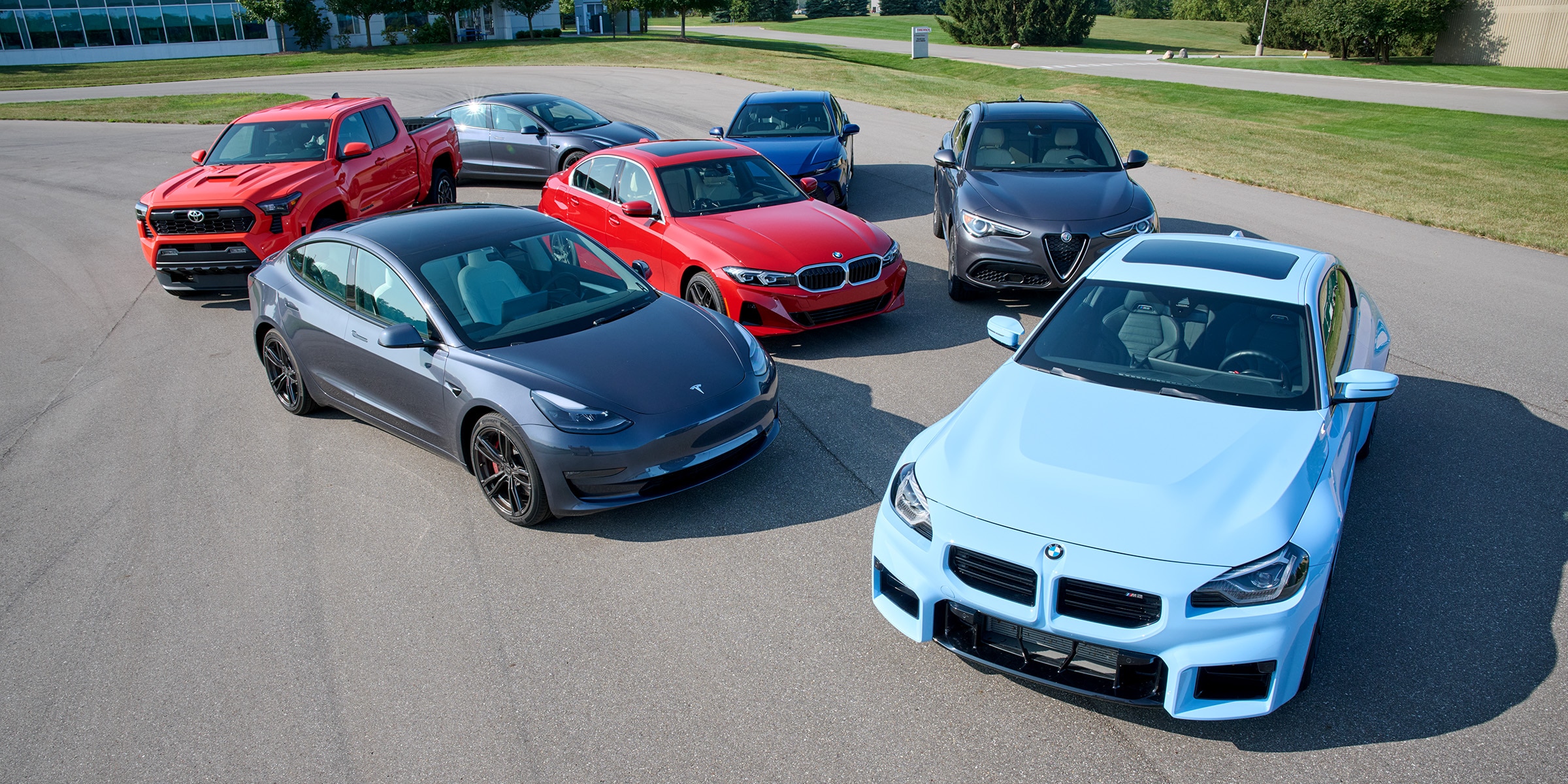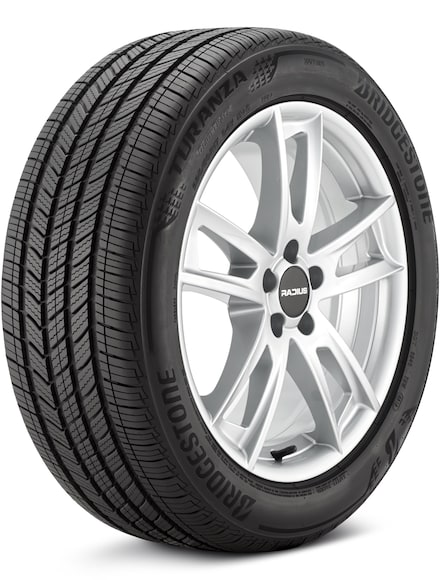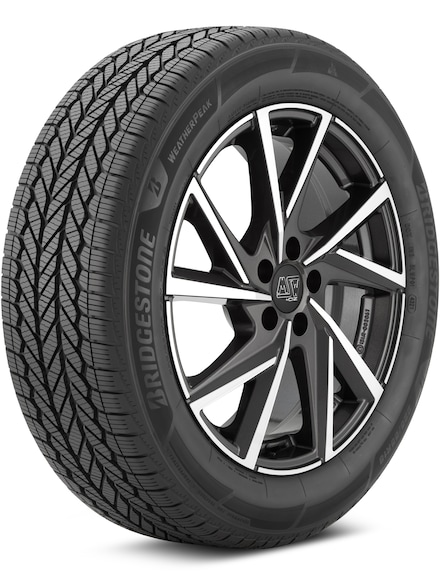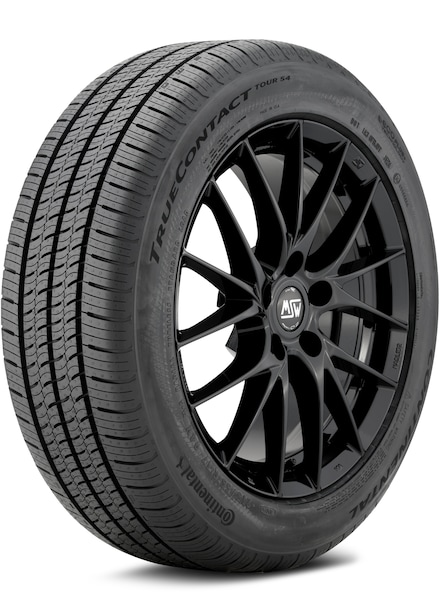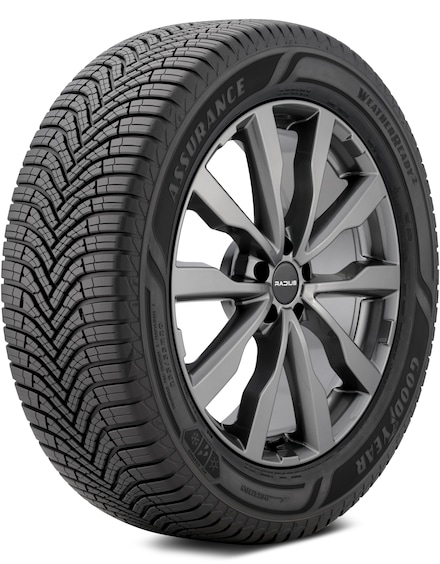Test Summary
Another player in the all-weather space, the three-peak mountain snowflake branded Quatrac Pro+ is an updated version of Vredestein's popular Quatrac Pro, a tire we've also tested and enjoyed previously. The updates are mainly aimed at improving rolling resistance and snow performance, which we'll revisit later on - for now, we'll see how it stacks up in the current landscape. The road ride experience on the Quatrac Pro+ was pleasant - it was firm enough that larger bumps were noticeable, but the smaller or more repetitive elements in the road felt as if they were smoothed away. The typical road noise was kept to a merciful minimum across most surfaces, even some of the rougher portions of the route. It blended together common hums and grinds into a singular low-volume tone. The steering response was lively enough, not the sportiest in the test, but it built effort smoothly, naturally, ideal for the category.
The time spent on our wet track was positive, and saw the Quatrac Pro+ on par with the best in the test, able to find grip and apply power even under these lower-traction circumstances. The Quatrac Pro+ felt agile; the steering was pointy and authoritative, and it was in its element here. Once the track dried off and we could attempt the Emergency Lane Change, it was a bit more speed-sensitive, only passing the maneuver half the time. It seemed to hit that limit right around 45mph. Just a little over, and it would fail, push, kick the rear end out, or, in some way, cause trouble. Right on, or just under, and it was fairly easy, but the quirk deserves note.
The Quatrac Pro+ was absolutely in its element on the snow - with objective braking and acceleration not only numerically challenging the best, it also felt confident and controlled. Braking in particular was authoritative. Moreover, its lateral control was forgiving, with room to recover from too much speed or delayed inputs, it always seemed there was just enough reserve traction for corrections. It wasn't special on the ice, merely middle-of-the-road there, but overall, this was a strong showing for the tire.
Summary Conclusion
For a lot of people, these are "set it and forget it" tires that will be driven for years at a time (with regular rotations, of course.) That also means that drivers will live with them that whole time, too - a quiet, comfortable tire is just as critical to keeping your sanity intact as their ability to hold onto the road is to them keeping your car intact during an emergency. That's the expectation with touring tires and one of the critical lenses we make sure each and every tire is viewed through when we test. Outside of a couple of products that could use improvement, most of the tires in this test still comprise the best-of-the-best for the touring world and the margins separating them are thin.
Few tires exemplified that better than Vredestein's Quatrac Pro+, which distinguished itself with an above-average road ride, and exceptional (for the category) wet and winter performance. We'd like to see some adjustments in consideration of its dry performance for any future iterations, but it was capable enough to make a strong impression overall. Michelin's CrossClimate2 has been a benchmark product for the category for a long time, and remains an excellent "go-to" consideration for a set of tires for any weather condition. It has earned every bit of credit it gets for establishing the bar that much of the competition has risen to, and in some ways continued climbing beyond. Speaking of "rising beyond" - Goodyear's Assurance WeatherReady2 - we've used the phrase "jack of all trades" to refer to many of the more generalist tires before, but that's selling this tire a bit short. It was great nearly everywhere we took it - it was plush on the road, with excellent handling, and a true top-tier category option when stressed to its limits on the track. It was a noticeable step above most of the tires in this test in the snow, even if it wasn't the absolute best. We'd love to see a little improvement in overall noise comfort, but even that was fairly good. Toyo's Celsius Sport is another tire that has earned equal consideration, with test-leading performance and handling on the track coming with a small price of a step down in comparative on-road comfort and winter performance.
The Cinturato WeatherActive from Pirelli deserves special mention for providing the nicest road ride in the group with very quiet travel over most roads and excellent composure. Unfortunately, its performance in wet and wintry conditions was just middle of the group, despite some strong braking, and its ability to handle dry maneuvers like the Emergency Lane Change, were lacking. Bridgestone's Turanza QuietTrack is a stalwart member of the touring class, just an all-around good tire. It's a category workhorse that isn't as loudly exceptional as some of its competitors - in both a literal and metaphorical sense - but avoids many critical pitfalls along the way as well. Continental's TrueContact Tour 54 occupies a similar, but particularly interesting place in this test. It was designed to take the qualities of two tires from Continental's Standard Touring All-Season and Grand Touring All-Season categories and fuse them into one that exists between worlds. It seems the experiment was a success - it certainly fits the "jack of all trades" model - not truly excelling in any one metric, but managing to be a good tire in every respect.
The Michelin Primacy Tour A/S had leading braking numbers from 60 mph in the wet, and was great on the track, proving it could handle everything from a sedate Sunday drive to swerving around commuters in the rain. However, it wasn't quite as confidently agile in the winter, and could use a bit livelier steering and on-road refinement to bring it up a notch. Pirelli's P7 AS Plus 3, deserves to be mentioned right alongside its cousin for having an excellent road ride and performance characteristics. Its wonderful steering really complemented the tire when it was dry, but struggled in the wet and snow compared to its rivals. Finally, Bridgestone's WeatherPeak and Michelin's Defender2 were certainly acceptable for their respective categories when looking at the broader picture, but neither really rose to the level of competitive with this selection of tires. The WeatherPeak absolutely deserves kudos for its winter performance, and was one of the best in this group for that specific environment, but it still has to contend with driving the rest of the year. Likewise, as a longevity-focused Standard Touring All-Season option, the Defender2's only real direct category competition here was the TrueContact Tour 54. However, with respect to the WeatherPeak and Defender2's on-the-street comfort, and dry/wet performance, they were simply a step down in most regards to the upper echelon of tires they were compared against here.

